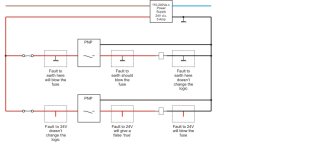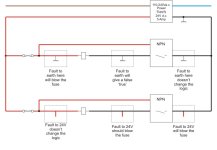Hello;
I have noticed one thing more that some time OEM selected NPN PLC I/Os instead of PNP while with PNP the trouble shooting is easy. This happens especially at those machines which have some middle or high speed inputs. What could be the reason of this?
I do prefer PNP system because of ease of testing and trouble shooting.
I have noticed one thing more that some time OEM selected NPN PLC I/Os instead of PNP while with PNP the trouble shooting is easy. This happens especially at those machines which have some middle or high speed inputs. What could be the reason of this?
I do prefer PNP system because of ease of testing and trouble shooting.








